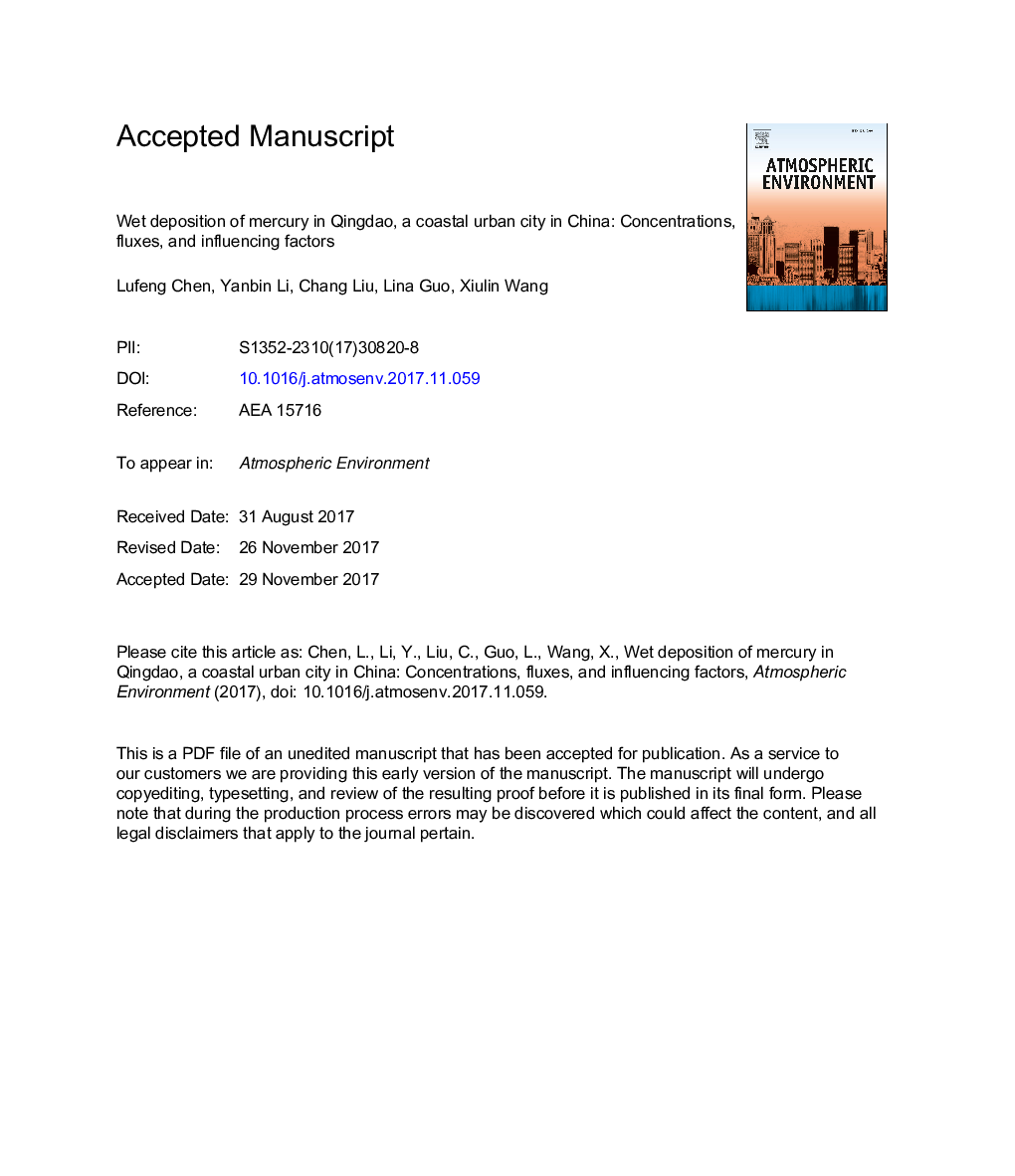| کد مقاله | کد نشریه | سال انتشار | مقاله انگلیسی | نسخه تمام متن |
|---|---|---|---|---|
| 8864228 | 1620300 | 2018 | 42 صفحه PDF | دانلود رایگان |
عنوان انگلیسی مقاله ISI
Wet deposition of mercury in Qingdao, a coastal urban city in China: Concentrations, fluxes, and influencing factors
ترجمه فارسی عنوان
رسوب مرطوب جیوه در چینگدائو، شهر شهری ساحلی در چین: غلظت، فلو، و عوامل موثر
دانلود مقاله + سفارش ترجمه
دانلود مقاله ISI انگلیسی
رایگان برای ایرانیان
کلمات کلیدی
جیوه، خاصیت، رسوب مرطوب عوامل کنترل، منابع، چینگدائو،
موضوعات مرتبط
مهندسی و علوم پایه
علوم زمین و سیارات
علم هواشناسی
چکیده انگلیسی
Mercury (Hg) is a global pollutant of public concern because of its high toxicity and capability for worldwide distribution via long-range atmospheric transportation. Wet atmospheric deposition is an important source of Hg in both terrestrial and aquatic environments. Concentrations of various Hg species in precipitation were monitored from March 2016 to February 2017 in a coastal urban area of Qingdao, and their wet deposition fluxes were estimated. The results showed that the volume-weighted mean (VWM) concentrations of total mercury (THg), reactive mercury (RHg), dissolved THg (DTHg), particulate THg (PTHg), total methylmercury (TMeHg), and dissolved and particulate MeHg (DMeHg and PMeHg) in Qingdao's precipitation were 13.6, 1.5, 5.4, 8.2, 0.38, 0.15, and 0.22 ng Lâ1, respectively, and their annual deposition fluxes were estimated to be 5703.0 (THg), 666.6 (RHg), 2304.0 (DTHg), 3470.4 (PTHg), 161.6 (TMeHg), 64.0 (DMeHg), and 95.7 (PMeHg) ng mâ2 yâ1, respectively. A relatively high proportion of MeHg in THg was observed in precipitation (3.0 ± 2.6%) possibly due to higher methylation and contributions from an oceanic source to MeHg in the precipitation. Obvious seasonal variations in Hg concentrations and deposition fluxes were observed in the precipitation in Qingdao. Correlation analyses and multiple regression analyses showed that SO2, pH, and NO3â were the controlling factors for THg in precipitation, whereas the MeHg concentration was primarily controlled by the SO2, WS, Clâ, and THg concentrations. PM2.5 and Clâ were the major controlling factors for PMeHg/TMeHg, whereas the TMeHg/THg ratio was mainly influenced by Clâ. The THg and MeHg fluxes were primarily controlled by precipitation, whereas Clâ was also an important factor for the MeHg wet deposition flux. The results of a 72-h backward trajectory analysis in the study region with the Hybrid Single Particle Lagrangian Integrated Trajectory (HYSPLIT) model indicated that Hg deposition in Qingdao mainly originated from four major sources, i.e., the local area, northwestern China, southeastern China and an oceanic source. This oceanic source is an important source of Hg (especially MeHg) in the precipitation in Qingdao.
ناشر
Database: Elsevier - ScienceDirect (ساینس دایرکت)
Journal: Atmospheric Environment - Volume 174, February 2018, Pages 204-213
Journal: Atmospheric Environment - Volume 174, February 2018, Pages 204-213
نویسندگان
Lufeng Chen, Yanbin Li, Chang Liu, Lina Guo, Xiulin Wang,
